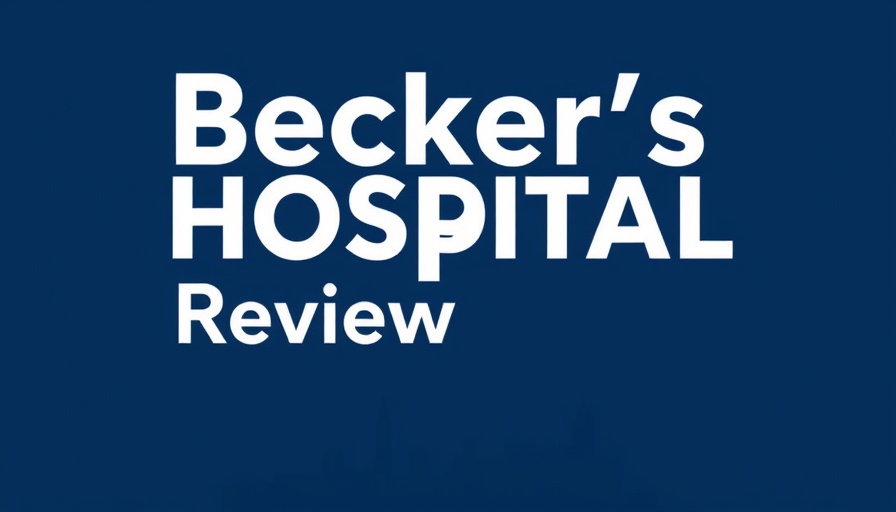
Spotlighting the Visionaries in Healthcare
As the healthcare landscape evolves, the role of Chief Experience Officers (CXOs) has never been more essential. These outstanding leaders are crucial in driving initiatives that enhance patient experiences while navigating the complexities of modern healthcare delivery. Becker’s annual compilation recognizes 57 notable CXOs who lead transformative efforts at hospitals and health systems nationwide. By innovatively integrating healthcare automation and patient engagement tools, these professionals shape a compassionate and efficient environment for patients and staff alike.
The Transformative Power of Patient Experience
Today's healthcare settings require more than just quality medical services; they demand a holistic approach focused on the patient journey. CXOs like Dr. Jennifer Jasmine E. Arfaa and Steve Basilotto prioritize seamless and meaningful interactions at every touchpoint. Dr. Arfaa, from the University of Maryland Medical Center, emphasizes human-centered care, integrating clinical and non-clinical teams to foster better patient outcomes. Meanwhile, Basilotto at Froedtert Theda Care Health is exploring new avenues for enhancing patient experiences by focusing on emotional connections and efficiency.
Importance of Healthcare Automation and Engagement Tools
With emerging trends such as healthcare automation, the integration of voice AI agents and RTM programs stands at the forefront of streamlining patient interactions. Tools that automate missed calls or enhance billing recovery not only increase patient satisfaction but also optimize practice revenue. These advancements can lead to lower operational costs and improved profitability, especially for independent providers and clinics looking to engage effectively with patients.
Challenges and Opportunities in Healthcare Management
Despite the progress made by these CXOs, challenges in healthcare management remain significant. Issues such as Medicare reimbursement, insurance underpayments, and compliance present ongoing hurdles. Leaders like Jennifer Bollinger of Sutter Health are innovating solutions demonstrated by her notable success in increasing online scheduling by 400%. Such achievements illustrate the potential for CXOs to utilize technology and new strategies to mitigate financial challenges while enhancing care delivery.
Shared Commitment to Employee Health Benefits and Retention
In addition to patient-focused programs, CXOs recognize that supporting staff leads to improved patient care. Programs emphasizing employee health benefits and pre-tax benefit plans not only contribute to staff well-being but also enhance medical staff retention rates. Strategies to improve healthcare HR and practice automation are increasingly vital for sustaining a healthy workplace culture.
Looking Ahead: Future Healthcare Experiences
The future of healthcare hinges on the capability of CXOs to adapt and innovate in the face of constant change. As telehealth grows and the need for senior care solutions expands, the emphasis on patient engagement will only intensify. The successful integration of technology and compassionate care will redefine patient experiences across the board. By harnessing actionable insights and tools, today's leaders are setting the groundwork for the healthcare systems of tomorrow.
Conclusion and Call to Action
In summary, the outstanding contributions of the 57 CXOs recognized by Becker’s illustrate a commitment to enhancing patient experiences through thoughtful leadership and innovative strategies. As healthcare continues to transform, these leaders inspire us all to embrace change and advocate for better practices within our communities. Recognizing the emerging trends in healthcare can empower independent physicians and providers to optimize their practices. It’s time to leverage these insights and tools to take your healthcare experience—and those of your patients—to the next level.
 Add Row
Add Row  Add
Add 




Write A Comment